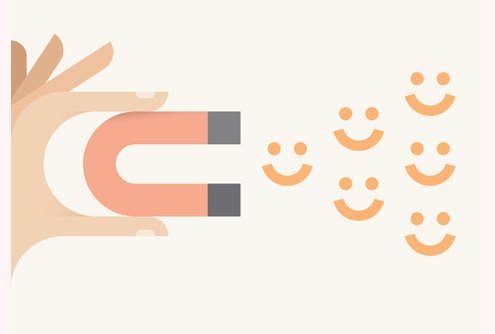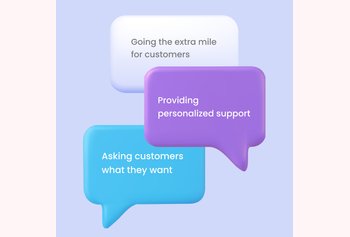When you come to think of it, customer churn is just a fancy word for a breakup.
It hurts when a customer decides to take their business elsewhere. A healthy healing and moving-on process involves asking yourself these tough questions.
- What went wrong?
- Why did they like you in the first place?
- What were you doing right?
- What were their expectations?
- Were your values aligning with theirs?
- What should you focus on moving forward?
Unfortunately, most people skip this part and move on without doing a full post-mortem. This subsequently leads to even more customer churn.
Since prevention truly is better than cure, here’s a comprehensive guide detailing what is customer churn, how to predict it, and actionable tips on how to avoid it while also suggesting handy tools that can help you monitor the churn effectively.
Table of Contents
- What is customer churn?
- How to predict customer churn?
- How do we categorize customer churn?
- 11 Ways to Reduce Customer Churn
- Tools to reduce customer churn
- Wrapping up: Reducing customer churn is the key to growth
What is customer churn?
Customer churn refers to the number of customers that have stopped using and paying for your product or service.
The formula for calculating revenue churn rate is very simple:

Customers lost during period t = (Total customers at the start of period t) + *new customers gained during the period t) – (total customers at the end of period t).
For example, you had 120 customers at the end of October. You gained 10 new customers by the end of November. The total number of customers at the end of November stood at 125.
The lost customers during November => 120 + 10 – 125 = 5
The monthly churn rate for November will be => 5/120 = 4.16%
You can dramatically accelerate your revenue growth and profitability by preventing customer churn. Assuming that your company has a monthly recurring revenue of $15,000. To that, you add another $2,000 every month. Now, you have a customer churn rate of 3%. If all of that remains more or less the same for the next 5 years, you’ll end up generating around $2.6 million. Now that’s not bad.
In the second scenario, let’s say you manage to bring down your customer churn rate by 10%, to 2.7%. Now that gives you an extra $100k in revenue. If you’re able to reduce your customer churn by 30%, that’s even better. Your revenue goes up to 3 million dollars!
A few churn rate benchmarks for SaaS companies
- For established and successful SaaS companies, the churn rate should be around 5-7% annually.
- In the case of early-stage SaaS companies, the ideal churn rate is around 5% monthly.
- For SaaS companies in the financial services domain, a rate of less than 20% is ideal.
- SaaS startups serving SMBs tend to operate with higher monthly churn, somewhere between 2.5% and 5%+.
- SaaS companies operating within the mobile industry should aim for less than 30%.
How to predict customer churn?
Customer churn is not a random event that occurs out of nowhere. A user canceling their account is the culmination of all unpleasant incidents over a specific period.
In most cases, they would have been unhappy with the product for a long time before calling it quits.
However, before they churn, most customers (or subscribers) would exhibit a peculiar behavior that is uncharacteristic of someone who likes your product.

“Before cancellation ever happens, there are clear signals that a customer is in danger of churning.”
Casey Armstrong
If businesses learn to read those signals, they might have the opportunity to take preventive measures to reduce customer churn. This is why you need to be proactive and include user behavior in your churn analysis, identify churn indicators, and monitor these indicators regularly. Here are a few churn prediction indicators your customer success team should watch out for:
1. Usage level
Customer churn is often preceded by a period of decreasing usage levels. Keeping an eye on the login activity will help you identify at-risk customers before they churn. There is no ideal level of login activity as it depends on your product, the customer journey, and how frequently they use it under normal circumstances.
It is also worrying when someone moves to a lower pricing plan of your product. There is a good chance they might cancel soon.
2. Feature Adoption
Every product has some key features that help them stand out from its competitors. If certain customers are not yet using these features, the chances of those customers churning are higher.
3. Customer’s KPIs
If your product is not helping customers achieve their KPIs, then the chances of them churning is higher. It is crucial that you regularly ask for their feedback through surveys, phone calls, or transactional emails.
4. Support tickets
It basically takes into consideration the number of support issues raised, the severity of the problems, and the time it took to resolve them. These three factors can significantly affect your customer’s loyalty to your brand and contribute to customer churn. If they haven’t reported any issues, that again is another problem. Silence doesn’t always mean they are happy with your product.
How do you ensure your customer support team does an excellent job every single time? With Hiver’s Shared Inbox, they can delegate customer queries in seconds, collaborate seamlessly, and much more.
5. Financial health
Finance health is measured at a monthly rate: whether payments are made on time or delayed, and the validity of the account’s credit card. Here are a few questions you should seek answers to:
- When is the contract due?
- What are the contract’s renewal terms like?
- What kind of customer support interactions are you seeing from the customer?
- Is the customer using the service and getting what they’re paying for?
- How does the account manager “feel” about the customer’s state of mind about the services they’re buying from you?
Once you have an idea of who might leave, it’s essential that you take steps to define the problem, fix it, and retain their business.
Implementing a systematic approach to uncovering at-risk customers and reaching out to them impacts engagement.
How do we categorize customer churn?
There are multiple reasons customers churn. By doing a proactive churn analysis factoring in the aforementioned indicators, you can preempt churn triggers and lower their incidence.
Having said that, in some cases, churn mitigation is not possible. Here’s how you can categorize churn:
1. Unavoidable Churn
Unavoidable customer churn happens when customers stop doing business with you due to things that are beyond their control. It is very hard to save these customers. Rather than trying to save them, you should try to analyze the reason behind their decision first.
The reasons behind involuntary customer churn could be:
- They are closing down their business.
- They can’t afford it any longer – some companies may encounter cash flow shortage forcing them to end the subscription.
- Outdated equipment – there are times when customers stop using your product because they don’t have the necessary equipment or a third party service to run it.
- Change in management or key users of your product/service have moved on from the company.
2. Avoidable churn
This occurs when customers decide to stop using your products by free will. Most of the time, the churned customers are not happy or satisfied with your product. Companies ought to spend most of their retention efforts on these customers as their risk of churning is relatively lower.
Here are a few reasons behind voluntary churn:
- Lack of regular communication with customers.
- Bad customer service – According to Hiver’s State of Customer Support 2024 report, 72% of customers plan to switch to another brand after a negative support experience.
- Customers are unhappy with the pricing.
- Too many support issues – bugs, errors, etc.
- Not taking customer’s feedback seriously.
- Customers find your product too difficult to use.
- Bad customer onboarding.
- No option available to scale-up.
- Security and privacy concerns.
- Lack of customized plans and packages.
- Difficulty in making payments.
- Competitor’s product/service seems more attractive to them.
It is always crucial for you to know what percentage of customer churn happens due to avoidable reasons. Investing in a CRM database can help you align and plan your retention strategies accordingly
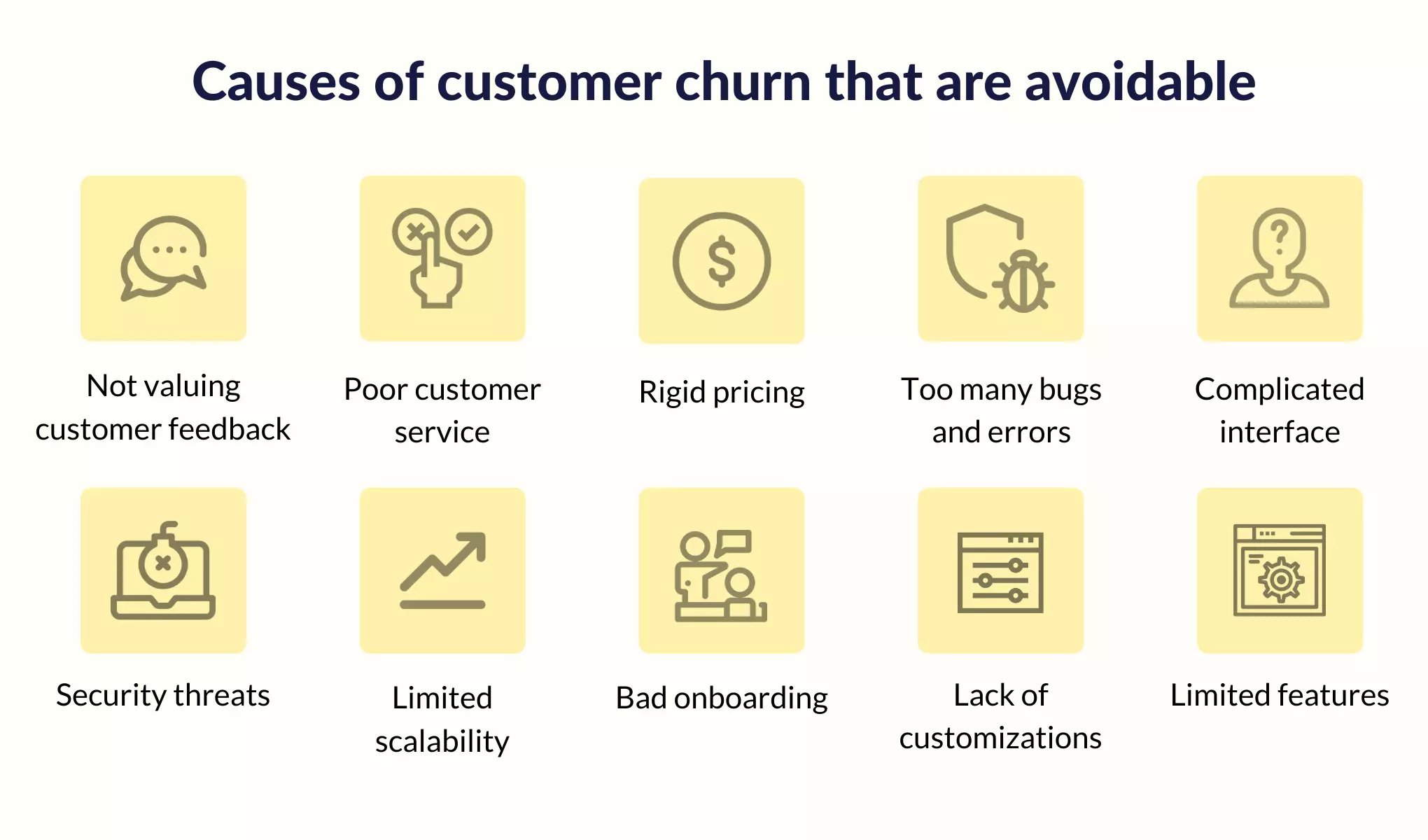
A quote from well-known customer service and customer experience advocate Bill Quiseng encourages organizations to:
“Work as hard to keep a customer as you do to find a new one.”
Bill Quiseng
Without much ado, let’s jump in and see what are the best ways for lowering churn.
11 Ways to Reduce Customer Churn
Here are some ways to create a churn prevention strategy.
1. Set realistic expectations from the get-go
The most common reason for high customer turnover – they fail to deliver on the promises made. It is a common practice across industries to over promise and under deliver.
The over-promising begins right from the first sales call, and it ends up doing more damage than good in the long term.
Why would a salesperson want to over-promise? There could be numerous reasons:
- They fear losing the customer’s interest
- They are under pressure from their boss
- They are desperate to close the deal
- They are unwilling to tell the customer what they do not want to hear
- They desire to come across as the ‘deal maker’
Big promises create big expectations, and when those expectations are not met, customers feel cheated and disappointed.
Instead, for reducing customer attrition, companies should stick to making commitments that they feasibly meet. Salespersons need to be trained to ask questions and not make promises in the dark.
Customers who are allowed to talk about their problems and aspirations will take you where you need to go. When you push a product to a customer while running a company script, their guard goes up and stays up.
However, if you do the opposite by asking customers non-threatening questions, and offering solutions that will help them achieve their goals, you’ll be able to develop good relationships. Your relaxed demeanor, respectful curiosity, and willingness to help will make your customers trust you. Once you do that, you’re well on your way to building customer loyalty and reducing churn.
2. Nail the first five minutes
The most reliable way to reduce customer churn and earn the loyalty of a customer is to deliver remarkable customer service. It essentially starts with the first impression your business creates in the minds of the customer.
More often than not, a customer would have formed an opinion of your business in the first seven seconds itself. In that short span of time, they will judge your employees on their knowledge, professionalism, friendliness, helpfulness, credibility, courtesy, confidence, responsiveness, and understanding.
Based on the above parameters, the customers would form one of the three opinions of your business (and your employee):
- They like your business (and the employee)
- They do not like your business (and the employee)
- They are indifferent
Dislike is obviously bad. But, indifference is equally harmful, especially in the long run. Indifferent customers are the ones who will sign up for your product half-heartedly and will move to your competitor at the first chance they get.
How do we combat this? Create a ‘wow’ moment for the customer as early as possible is an effective strategy to reduce customer churn. You need to ensure that you focus on your strongest value props from the very beginning. Tell them how your product adds value. Get your customers to commit to you. Get them to believe in your product. You want them to love the product and not look for reasons to stop using it.
When a first impression is built based on the value your product can add, it is the beginning of a sticky relationship and may lead to reduced churn rate.
Here’s a great quote by Josh Ledgard about why the first five minutes matter can potentially reduce customer churn:
Josh Ledgard, Co-founder at Kickofflabs
“When someone starts using a new product, they want to see immediate results. This gives them the impression that they could be even more successful as time goes on. If the first 5 minutes are painful, the rest of the experience will be colored by a bad first impression.”
3. Send interesting emails
While most businesses do keep in touch with their customers on a regular basis, it is just not enough. Automated emails for trial sign-ups do not really qualify for actual communication.
People are bombarded with automated emails so often that they have stopped paying attention to ‘Do you need help with’ emails. When you’re looking at preventing customer churn, all you have to do is make it a little more interesting, a little more human.
Dropbox sends out this lovely email to customers who have not started using the app despite having signed up for it as a part of their churn management strategy:
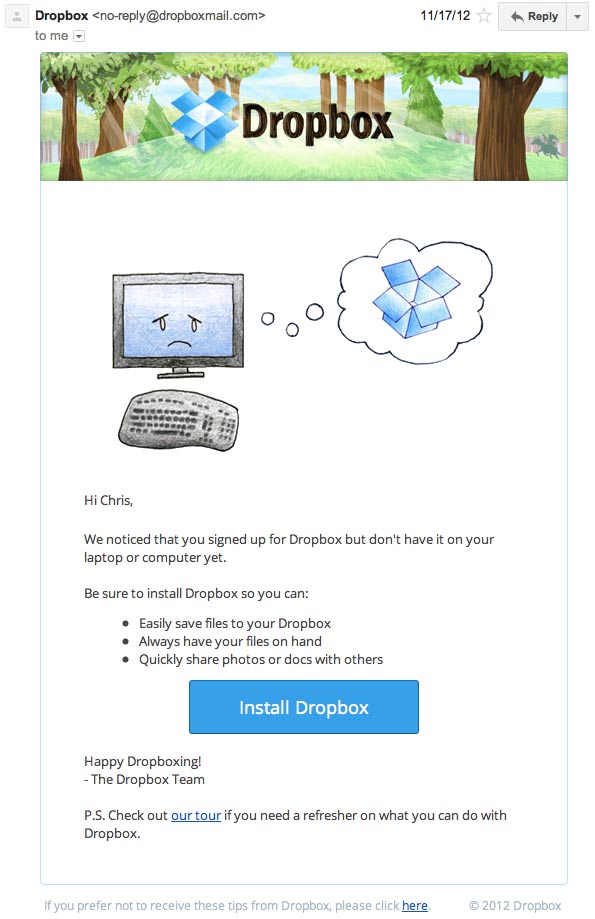
Now this one’s cute, simple, and right on-brand – any day better than a plain text email. These little things go a long way in fostering good relations with customers.
Mention did something interesting to bring down customer defection- they started sending out Pro-tip emails for managing churn:

These emails became pretty popular with their customers – Mention was able to bring their churn rate down by 22% within just one month.
4. Constantly remind customers of your value
Your customers signed up for your product because you had something nobody else did. They signed up because they saw value in what you make, because you had something worth their attention.
Over time, customers tend to forget the very purpose of subscribing to your service. It also doesn’t help that competitors are constantly vying for their attention that you once held.
You have to make a genuine effort to remind your customers of your value proposition every now and then. You have to take actual steps to remain at the top of their minds. Here’s how to ensure reduced churn:
- Every time you send automated emails, ensure that you highlight the best features of the product.
- Every time you release a new feature, ensure that you tell all your users about it. Offer them free usage for a few months.
- It is a great idea to send a few case studies to your customers every now and then.
- Additionally, you should create infographics and tutorials, to tell customers how useful your product is.
Constantly remind them that you bring something important to their lives every day. It is your responsibility to keep reinstating their faith in you.
5. Keep a keen eye on the competition
How do you reduce customer churn and improve their perception of your product?
By benchmarking your overall performance and customer satisfaction against your competitors. A continuous process of measuring your performance against a standard will move your employees to do everything a little better.
The pertinent question here is – what aspects do you benchmark to see reduced churn?
Gallup studied 1 million small businesses and found four key drivers for determining whether a customer is satisfied or not:
- Response times (speed & efficiency)
- Attention to details (accuracy and thoroughness)
- Collaboration (level of partnership between you and your clients)
- Helpfulness (willingness to go out your way to get the job done)
For all of you who are really serious about competitive benchmarking, Client Heartbeat is a wonderful tool. It is a business intelligence tool that lets you benchmark your performance against local competitors, industry leaders, and industry averages.
You can then use this intelligence to make better-informed business decisions. Keeping an eye on the competition is key to reducing customer churn.
6. Collect feedback from customers
This is the easiest, yet the most powerful way to prevent customer churn. According to a report by Microsoft, brands are viewed more favorably by 77% of consumers if they proactively invite and accept customer feedback.
Several theories of consumer psychology point to the fact that even a simple satisfaction survey appeals to your customers’ desire to be coddled, reinforcing the positive feelings they might already have about your product, and making them more likely to buy from you.
The very act of asking questions or seeking opinions allows people to think deeply about your product and brand that they otherwise wouldn’t do. They might not consciously realize that they love a feature unless you seek feedback about it.
When you’re looking at reducing customer churn, collecting feedback would definitely strengthen the association customers have with your product. They would start to actively think about its usefulness and benefits. The product no longer exists only in the subconscious; it is at the top of the mind of the customer. This sort of association is enough to keep them from wandering off to the competition and ensure churn prevention.
This is not the end of the story. To lower churn, collect feedback and make actual improvements to the product or a process based on it, it is a great opportunity to tell your customers that you really acted based on what they expressed. Doing this can even help you improve customer relationships and prevent churn.
Even better if you can have a small reward to go with it – a discount on their subscription or a free trial for an otherwise premium feature will work like a charm.
If your customers post their feedback on review sites, it will help if you respond to their predicament on the same platform within 24 hours. Empathizing with their pain and publicly acknowledging that your team is working hard at resolving their issue shows that you are committed to delivering quality customer care which in turn will help you reduce customer churn.
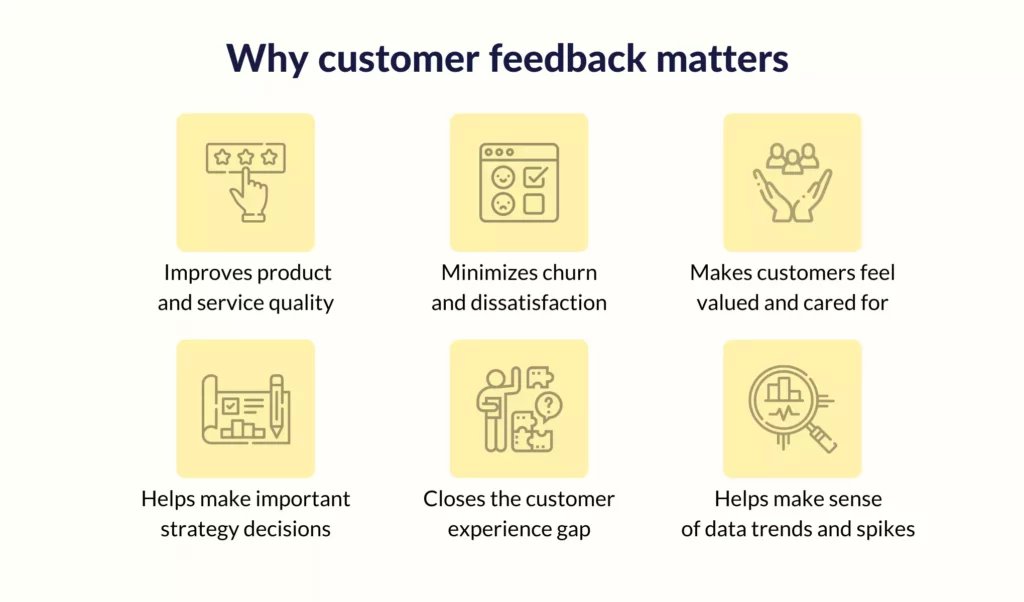
7. Market to current customers and prospects alike
A large number of companies make the mistake of marketing only to prospects, and spending little or no efforts on the existing pool of customers. Forgetting about existing customers can prove to be very detrimental.
According to Totango, most businesses “spent only 21% of their marketing budget on existing customers, whereas these customers make up 61% of their revenue.”
Imagine gaining a new customer with your marketing spend but losing an existing one. The end result: you’re left with the same number of customers and lesser revenue.
Now that’s a crime. You cannot take your existing customers’ loyalty for granted. The more you care for them, the more loyal they become – you don’t want to miss this opportunity.
When you’re looking at reducing customer churn, marketing to existing customers will foster a much closer association between you and them. It’s never a bad idea to remind them of your product, your propositions, and your values.
There are several clever ways to do this:
- Create newsletters that focus on ways to use your product better, ways to help your customers get more done with your product.
- Send them updates about new developments within your product and ask for their suggestions.
- Offer a discount once every year – a surefire way to foster long-term association.
- Host online events for your existing customers
- Give them an exclusive first preview of a new feature
Above all else, ensure that you offer your existing customers even better rewards, deals, and treatment than you do to new customers.
8. Uncover your weaknesses
No business is flawless. No matter how efficient and streamlined your processes have become, there is always one element that is weaker than the other – that’s your weak spot.
Going by the old proverb ‘you are only as strong as your weakest link’, it is imperative that you uncover it, and work towards improving it.
The two aspects that you need to uncover are:
- Why are people not signing up for your service?
- What is it that your company is not good at?
It is very important that you collect feedback from customers who have just stopped using your product. More often than not, you will be able to find a few common reasons most of your churned customers would quote.
Why would someone who visited your website not sign up for your service – this is an important question you need to answer. There is a good chance that your competitor has what your product is missing. A reliable way to identify the features that are off-putting for your prospects is to employ tools that monitor their behavior on your website.
Without knowing your weaknesses, you will have no clue what to improve. There have been numerous instances in the past when companies went down because they failed to work on their weaknesses.
Kodak failed to see that the future lies in digital, and kept on spending on R&D for traditional cameras. By the time they realized their mistake, the bus had left the station.
Microsoft committed a big mistake by not paying attention to inbuilt security features and kept relying on third-party services such as McAfee. Apple took advantage of this situation by building computers with sturdy security features. Microsoft ended up churning a lot of customers.
When you’re looking at reducing customer attrition, remember that focusing on weaknesses is just as important.
9. Build a knowledge base
A customer who understands your product and its benefits well is an educated customer, and educated customers do not abandon you.
If you create a library of resources (articles, knowledge base, videos, and whitepapers) that can educate your customers about the potential benefits of your product, they will start realizing the value in your product and you will lower your churn risk.
All customers have problems they are hoping to find solutions for. If your resource library is able to genuinely help them with solutions, you go a long way in earning their loyalty.
Hubspot has done a fantastic job at it. Their primary business is an inbound marketing tool that helps businesses generate and convert leads. At the same time, they run an Inbound Marketing Academy filled with a variety of articles, videos, and blogs about inbound marketing.
They are helping their customers get better at using their products. A majority of the educational material is based around Hubspot. If a Hubspot customer leaves and defects to a competitor, they would be sacrificing the personalized educational materials. A few of these resources are more valuable than the product itself!
10. Introduce live chat
Live chat is a platform that links customers to support professionals. This helps your users to fix their problems in real-time. With access to live chat, customers spend less time waiting for a solution or digging through your website’s knowledge base.
You can also use chatbots to deliver instant solutions to frequently asked questions. While they’re not the same as live chat but they can be effective in starting a support dialogue with clients and then escalating the issue to support professionals if necessary. This is a great tool when your agents are offline, and your customers need help with basic queries about your product or service.
Live chat and chatbots help ensure faster response times which in turn helps in preventing customer churn.
11. Simplify the onboarding process
A poor onboarding experience can lead to unanticipated attrition rates for businesses during the first several weeks after the acquisition.
Your customers will have their first experience with your product or service during the sign-up process. It’s crucial that the onboarding has to be simple and frictionless.
Make it a goal to streamline your onboarding process if it is confusing or overwhelming.
If you don’t, potential consumers may abandon the sign-up process and/or go to another SaaS provider entirely.
Tools to reduce customer churn
Now that you’ve understood the methods to reduce churn, here are a few tools available in the market that can help you monitor churn.
Churn Buster
Churn Buster helps make sure that your customer’s payment information stays up to date. Payment failures are a major reason for churn. Some companies managed to improve their revenue by 50% after they started using this tool. It will monitor customer payments and send out an email in case of failures. Churn Buster also has a feature where you can reach out to your customers whose payments failed over the phone. It also has a reporting tool that offers daily insights into important metrics.
YesInsights
YesInsights helps companies collect actionable feedback from their customers. It will help you create simple one-click and Net Promoter Score surveys. Doing this will help encourage more people to take your survey. This way, you’ll be able to clearly identify and understand the major reasons behind why customers churn.
MixPanel
You can do complex behavioral analysis and generate automated insights using this app. You will be able to find out how customers engage with your pages. Mixpanel tracks views, shares, likes, and purchases on different web and social media platforms. The app will help users to gauge the potential of each marketing channel in terms of customer engagement.
Intercom
Intercom is not specifically a tool aimed towards reducing churn, but it’s an awesome tool that does just about anything including support. Intercom has one of the best support systems and email drip campaigns that you can use to reduce churn. Intercom will warn you as soon as users are “slipping away”. That way you can look into it right away and communicate with that user to see if they are experiencing any problems.
Intercom shows the people using your product and what they do in it, making it easy to quickly find the right people to ask for feedback. Automatically ask users for feedback right after they’ve used a feature, in your app — when and where they’re most likely to respond.
Ambassador
Ambassador provides the most flexible, customized experience for your referral programs and affiliate programs. Referral, partner & affiliate channels can all be managed in a single dashboard via Ambassador. You can reward Ambassadors for referrals with cash, points, virtual currencies, or something from your swag store and receive actionable metrics to measure ROI.
With Ambassador, you can leverage the power of the social web using affiliate programs to influence purchasing decisions. Use Social recommendations to increase sales and conversions. Ambassador integrates easily with your favorite 3rd party applications. From newsletter software to billing applications and even Salesforce and Hubspot, our integrations keep your referral program running smoothly while syncing data between your favorite applications.
Wrapping up: Reducing customer churn is the key to growth
Although the bitter truth is that some customers will always churn no matter what you do, you should never consider it a ‘part of the business’ and take it lightly. It’s an even bigger problem when you are not worried about customer churn. If left unchecked, customer churn can even take your company down for good.
Always keep a close eye for early warning signs, and take steps the moment you spot an at-risk customer so you can work towards nurturing them, building loyalty, and increasing your CLV (customer lifetime value).








